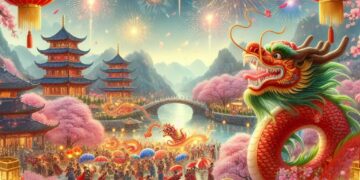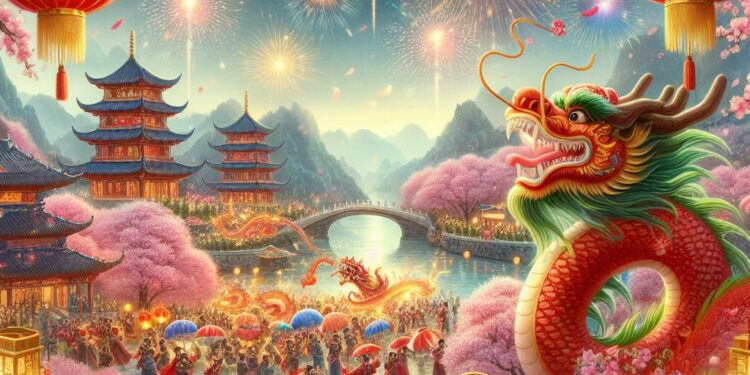Introduction
The Lunar New Year, often enveloped in vibrant reds and echoing with the jubilant sounds of fireworks, is not merely a time of celebration; it represents a profound cultural tapestry that stretches across various Asian countries. At its core, the Lunar New Year signifies the arrival of spring according to the lunisolar calendar—a period of renewal, hope, and the ushering in of prosperity. While it is famously known as Chinese New Year, this festival extends beyond China’s borders, celebrated under different names and through unique traditions in countries like Vietnam, Korea, and beyond.
This widespread celebration is a testament to the rich diversity and interconnectedness of Asian cultures. Each country brings its own flavor to the festivities, from the Tet Nguyen Dan in Vietnam, which translates to the “Feast of the First Morning of the First Day,” to Korea’s Seollal, offering a glimpse into the myriad ways communities honor their ancestors, welcome the new year, and pray for abundance. Despite these variations, common threads weave through the celebrations: family reunions, the significance of certain foods, the exchange of gifts, and the universal hope for a fortunate year ahead.
The Lunar New Year is a time when the past is honored, the present celebrated, and the future greeted with open arms. It’s a period when homes are cleansed to sweep away ill-fortune and make way for incoming luck, streets are adorned with red lanterns symbolizing joy and good fortune, and people don traditional attire as a nod to their heritage and ancestors.
However, the Lunar New Year’s influence is not confined to the Asian continent alone. Similar celebrations occur globally, reflecting the universal human desire for renewal and festivity at the year’s turn. This article delves into these celebrations, exploring how different cultures mark this auspicious time in their lunar calendar, thus highlighting the beauty of cultural diversity and the shared joy in welcoming a new year.
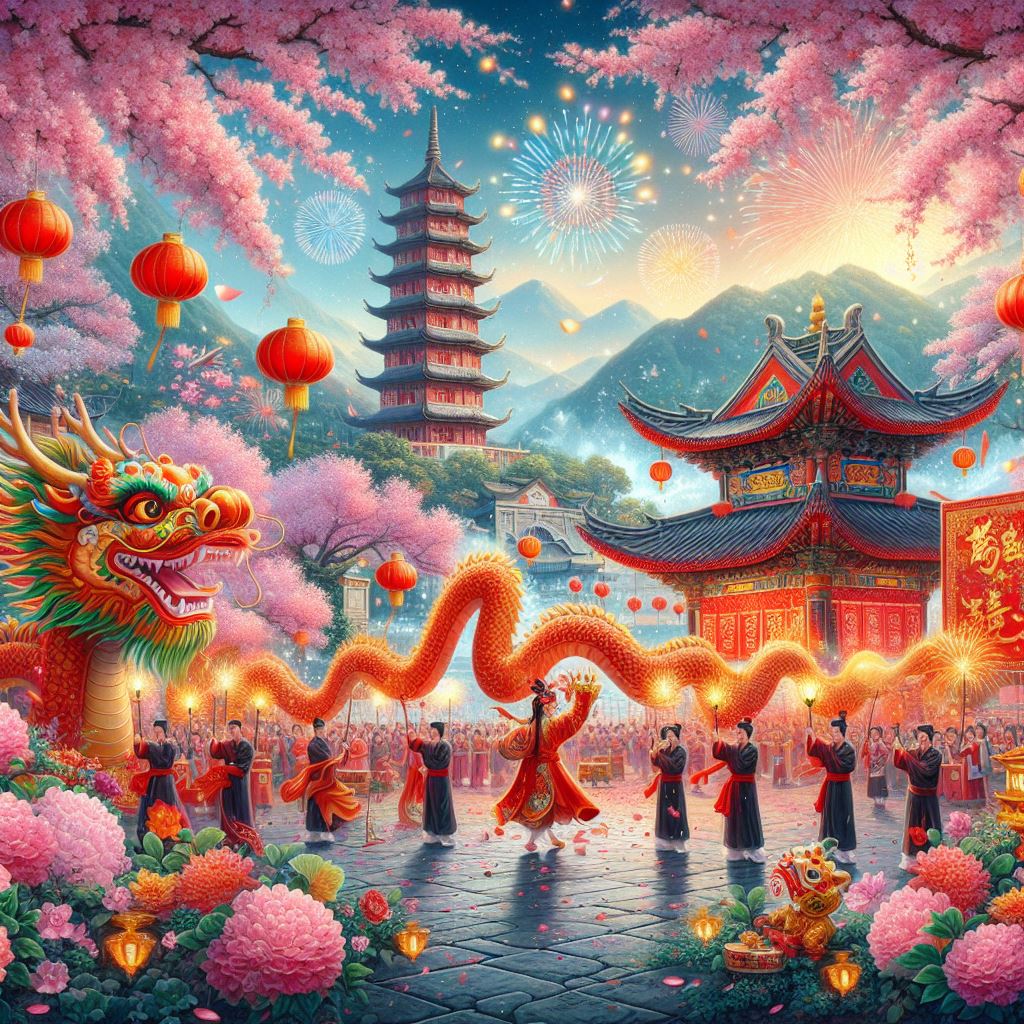
Lunar New Year Celebrations
China
In China, the Lunar New Year, also known as the Spring Festival, marks the beginning of the lunar calendar and is the most significant holiday of the year. Spanning fifteen days from New Year’s Eve to the Lantern Festival, it’s a period rich in tradition and festivity. Families reunite from far and wide, symbolizing the importance of kinship and the homecoming of spirits to the ancestral homeland. The festival is steeped in rituals aimed at ushering out the old year and welcoming the new with health, wealth, and happiness.
The celebrations commence with a thorough house cleaning, signifying the removal of bad luck and making room for incoming good fortune. Homes are then adorned with red decorations, lanterns, and couplets bearing auspicious phrases to attract luck and prosperity. The color red dominates the festival, symbolizing joy and good fortune.
One of the most awaited customs is the giving of red envelopes, or “hongbao,” filled with money, from elders to children and unmarried adults, symbolizing the transfer of fortune and blessings. The New Year’s Eve family dinner is a lavish feast featuring dishes like fish (representing abundance) and dumplings (symbolizing wealth).
Dragon and lion dances are performed in public spaces, their movements believed to drive away evil spirits and bring good luck. Fireworks and firecrackers light up the night sky, a practice rooted in ancient times to scare off mythical monsters.
Vietnam (Tết)
Tết Nguyên Đán, or Tết for short, is the Vietnamese celebration of the Lunar New Year, marking the arrival of spring based on the lunar calendar. It is the most important holiday in Vietnam, embodying reunions, ancestral worship, and the appreciation of both family and nature. Preparations for Tết begin weeks in advance, with families cleaning and decorating their homes with peach blossom branches, kumquat trees, and colorful lanterns to signify prosperity, health, and the cleansing of evil spirits.
Unique to Vietnamese tradition is the emphasis on the first guest to visit the home after the new year begins. This person is carefully chosen based on their perceived luckiness, as they are believed to set the tone for the year ahead. Special foods prepared during Tết include bánh chưng (sticky rice cake), which symbolizes the Earth, and bánh dày, representing the sky, reflecting the harmony between nature and humanity.
Korea (Seollal)
Seollal, the Korean Lunar New Year, is a time of homage to ancestors, family bonding, and the celebration of the coming year. It is one of Korea’s most significant holidays, with festivities lasting three days. Koreans don traditional attire called hanbok and perform ancestral rites known as Charye. These rites involve offering specially prepared food to ancestors as a sign of respect and gratitude.
A key feature of Seollal is the sharing of a ceremonial meal, including dishes like tteokguk (rice cake soup), which is believed to add a year to one’s age and signify the gaining of wisdom. Playing traditional games like Yutnori (a board game involving sticks) and flying kites are popular activities that foster community and family ties.
Seollal is not just a time for looking back and honoring ancestors but also for enjoying the present with loved ones and looking forward to the new year with optimism. Through these rich and diverse traditions, the Lunar New Year is celebrated across Asia, each country adding its unique touch to the festivities, yet all sharing the common themes of renewal, hope, and the gathering of family.
Similar Celebrations in Other Cultures
Mongolia (Tsagaan Sar)
Tsagaan Sar, translating to “White Moon,” is Mongolia’s Lunar New Year celebration, marking the end of winter and the beginning of spring. It is a time when families gather, pay respects to elders, and perform rituals intended to usher in a prosperous year. The festival is deeply rooted in both Mongolian Buddhism and the nomadic traditions of the country, emphasizing purity (hence the focus on white foods) and renewal.
Preparations for Tsagaan Sar include thorough house cleaning and the preparation of traditional garments and foods. A central aspect of the celebration is the Tsagaan Sar table, which is meticulously arranged with dishes symbolizing wealth, happiness, and longevity. Among these is the “ul boov,” a tower of cakes representing the steps to prosperity. Dairy products, particularly those that are white to symbolize purity and milk (a staple of nomadic life), play a significant role in the festivities. Families visit each other’s homes, starting with the eldest members, to exchange gifts and blessings for the new year.
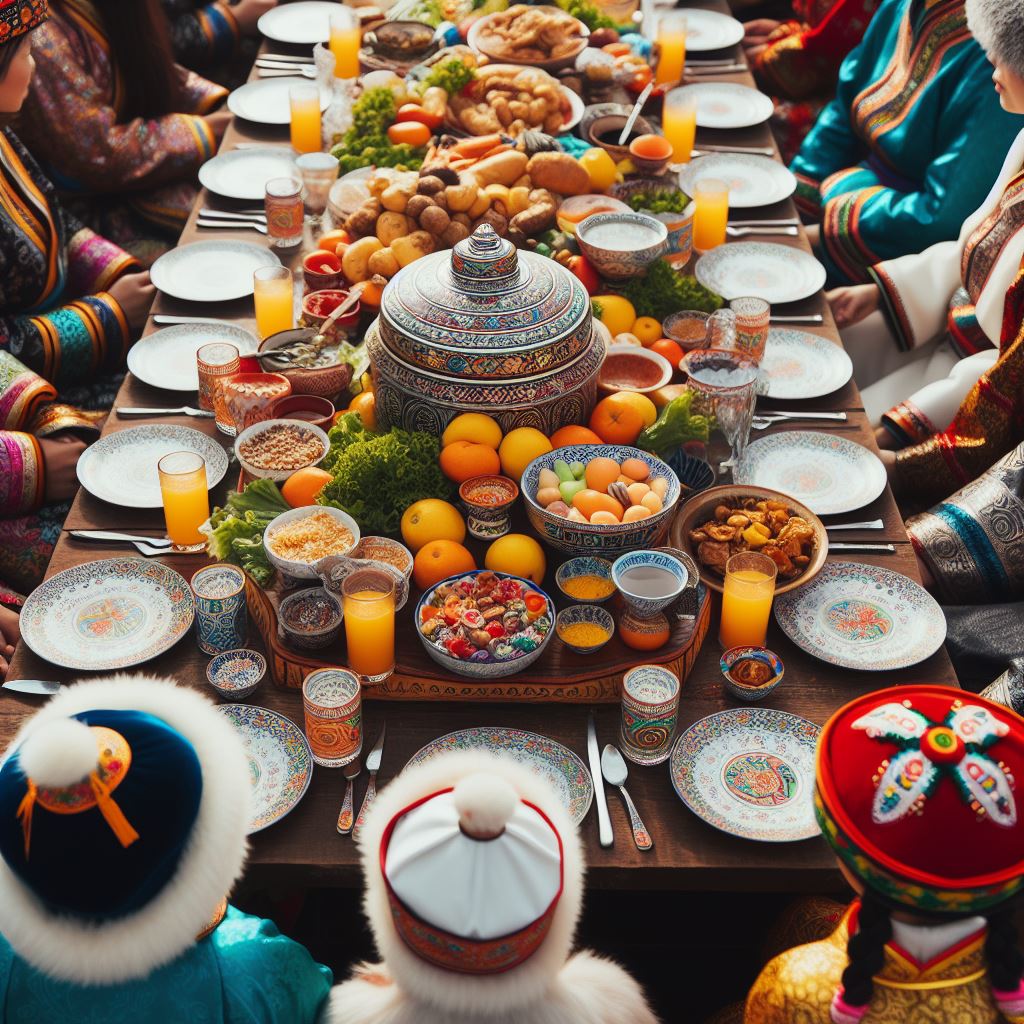
Tibet (Losar)
Losar, the Tibetan New Year, is one of the most important festivals in Tibet, celebrated for up to 15 days, with the first three days being the most significant. The festival dates back to the pre-Buddhist period in Tibet when it began as a winter incense-burning custom to appease local spirits. Today, Losar is a blend of Buddhist ceremonies, ancient rituals, and public celebrations.
Preparations for Losar involve cleaning homes, making offerings to deities, and preparing special foods. The celebration starts with the “Lama Losar,” the Tibetan spiritual New Year, where respect is paid to the Dalai Lama and other spiritual leaders. One of the key rituals is the creation of the “chemar” box, filled with tsampa (barley flour) and butter, symbolizing prosperity. Traditional foods like “guthuk,” a noodle soup made to expel any negativities of the old year, are prepared. Festivities include ancient ceremonies, dance performances, and the singing of traditional songs, reflecting Tibet’s rich cultural heritage.
Nepal (Losar)
In Nepal, Losar is celebrated by various ethnic groups, particularly by the Sherpa, Tamang, and Tibetan communities, each adding their cultural nuances to the festival. The celebration marks the beginning of the new year and is observed with great enthusiasm, featuring traditional music, dances, and special foods.
Different regions in Nepal have their own specific practices and timings for Losar, depending on their unique Buddhist and cultural calendars. The festivities often include wearing traditional attire, visiting monasteries, and offering prayers for a prosperous year. Community feasts are common, where dishes like “khapse” (a sweet, deep-fried pastry) and “chhaang” (a Tibetan barley beer) are enjoyed. The emphasis is on joy, community, and the renewal of bonds among friends and family.
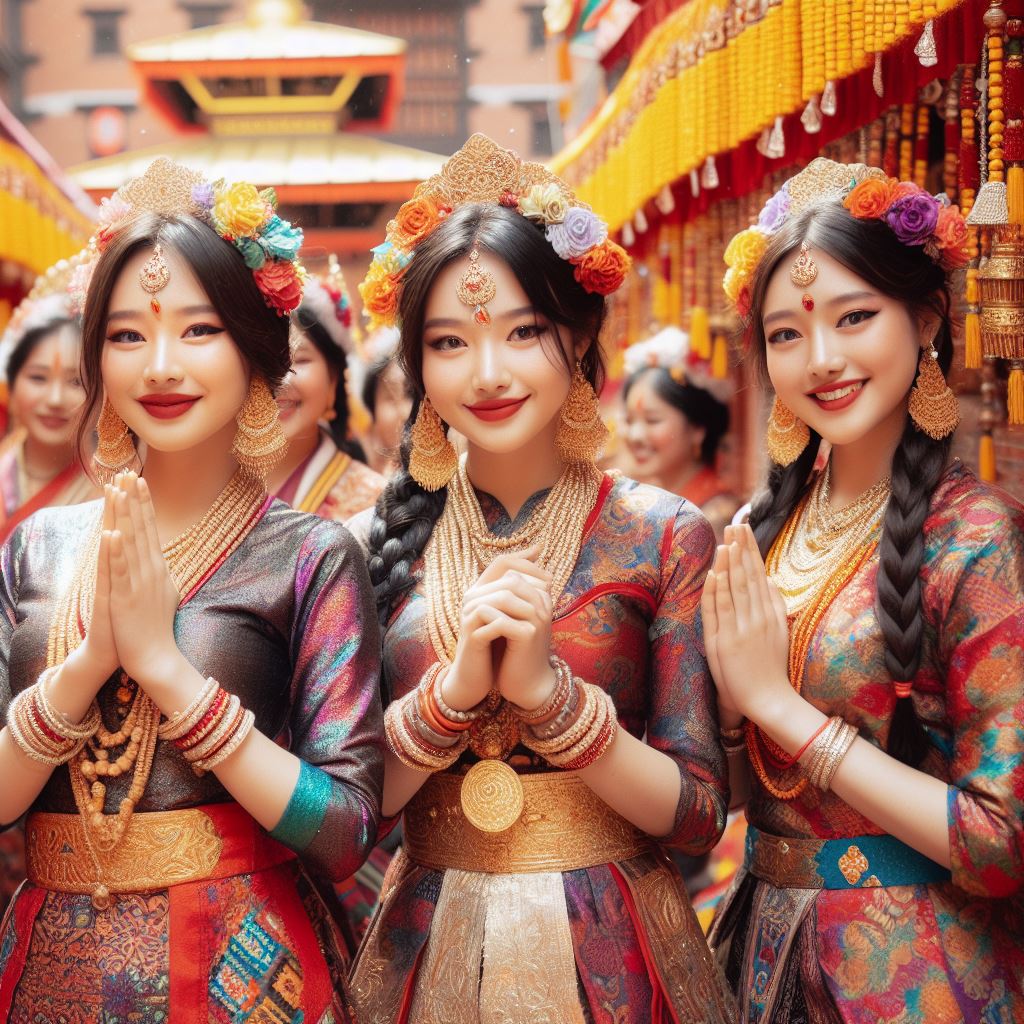
Japan (Setsubun)
While not directly aligned with the Lunar New Year, Setsubun in Japan shares the spirit of marking a change in seasons, occurring in early February. It is known as the day before the beginning of spring, according to the Japanese lunar calendar. The festival is famous for its “mamemaki” ceremony, where people throw roasted soybeans inside and outside their homes while chanting, “Oni wa soto! Fuku wa uchi!” (“Demons out! Luck in!”). This ritual is believed to cleanse the home of evil spirits and bring in good luck for the year ahead. Setsubun is a vibrant example of how different cultures celebrate the changing of seasons and the concept of starting anew.
India (Makar Sankranti/Pongal/Lohri)
Around the same time as the Lunar New Year, several regions in India celebrate harvest festivals, marking the transition from winter to spring. Makar Sankranti, Pongal, and Lohri are among the most prominent, celebrated with distinct traditions but sharing common themes of gratitude, renewal, and community.
- Makar Sankranti: Celebrated across India, it marks the sun’s shift into the zodiac sign of Makara (Capricorn). It’s a time for kite flying, bonfires, and feasts including sweets made from sesame seeds and jaggery.
- Pongal: A four-day harvest festival in Tamil Nadu, dedicated to the Sun God, Surya. Homes are cleaned, and people cook a special dish called “Pongal” made of rice and milk, boiled in clay pots.
- Lohri: Celebrated in Punjab, Lohri marks the end of winter. Bonfires are lit, around which people gather to throw puffed rice and popcorn, sing folk songs, and dance. It’s a celebration of the winter solstice, fertility, and the harvesting of the rabi (winter) crops.
These festivals, though not on the exact date as the Lunar New Year, resonate with the themes of joy, community, and the cycle of seasons, showcasing the rich tapestry of cultural celebrations during this auspicious time of year.
Comparative Analysis
The Lunar New Year and similar celebrations across various cultures, though distinct in their practices and beliefs, share underlying themes that highlight universal human values and aspirations. These festivals, occurring around the same time each year, underscore the significance of renewal, family, and the welcoming of spring—a period that symbolizes growth, prosperity, and new beginnings.
Theme of Renewal
Across all these celebrations, from the Lunar New Year in China, Vietnam, and Korea to Tsagaan Sar in Mongolia, Losar in Tibet and Nepal, and even the harvest festivals in India, there’s a strong emphasis on the idea of renewal. This can be seen in the thorough cleaning of homes to sweep away misfortune and make way for incoming luck, the wearing of new clothes, and the preparation of special foods that symbolize prosperity and health. These rituals reflect a collective desire to start afresh, leaving behind the trials of the past year and looking forward to a future filled with promise.
Importance of Family
Another universal theme is the importance of family. These festivals serve as a time for reunions, where family members, often separated by distance due to work or other reasons, come together to celebrate. The significance of honoring ancestors during these times, as seen in the ancestral rites of Korea’s Seollal or the family visits during Mongolia’s Tsagaan Sar, underlines the deep respect for family ties and the lineage that connects the past, present, and future generations. It’s a period marked by gratitude, where the bonds of family are celebrated and strengthened.
Welcoming of Spring
The timing of these festivals with the onset of spring is no coincidence. Spring is a season of growth, renewal, and the awakening of nature. The celebrations, therefore, embody this spirit of rejuvenation, not just in a physical sense but also symbolically, as people look forward to a year of abundance, happiness, and health. The use of symbols like flowers in Vietnam’s Tết, or the lighting of bonfires during India’s Lohri, are manifestations of this connection to nature and the cycle of seasons.
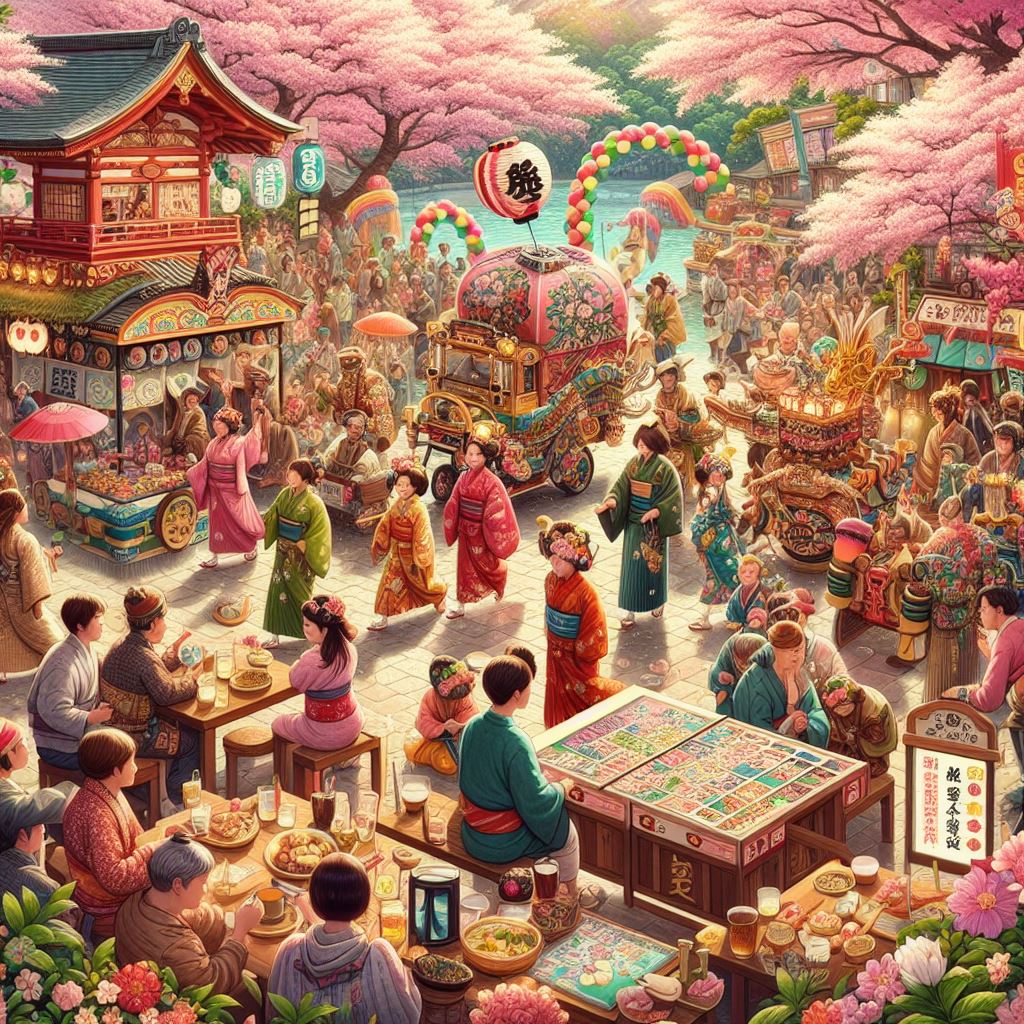
Reflection of Cultural Diversity
While these festivals share common themes, the diversity in their observance reflects the rich tapestry of human culture. Each celebration brings to light the unique traditions, foods, and rituals that define a community’s identity. Yet, in their collective celebration of life, family, and the natural world, these festivals also remind us of our shared humanity and the universal quest for happiness and prosperity.
Conclusion
The Lunar New Year and its counterparts across the world are a vibrant testament to the richness of cultural diversity and the shared joy in welcoming a new year. These celebrations, with their emphasis on renewal, family, and the harmony with nature, not only mark the passage of time according to the lunar calendar but also foster a sense of unity and hope. They remind us that, despite our differences, we all cherish the opportunity to begin anew, to gather with loved ones, and to look forward with optimism to the future. In this way, the Lunar New Year and similar festivities around the globe serve as a powerful symbol of the universal values that bind us together as a human family.


